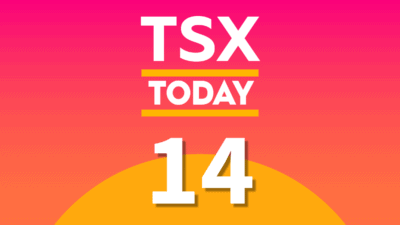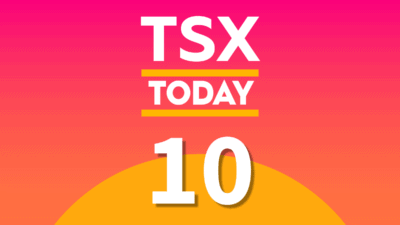The Canadian stock market continued to slide for a second consecutive session on Thursday as investors remained cautious amid mixed U.S. economic data and growing geopolitical tensions. The S&P/TSX Composite Index fell by 33 points, or 0.1%, to settle at 23,969.
Energy stocks benefited from a 3.8% surge in crude oil prices due to the ongoing Israel-Iran conflict, but other areas of the market didn’t fare as well. Other sectors like utilities, real estate, and technology saw big declines, offsetting gains made in the energy space. This mixed performance across sectors kept the TSX index in negative territory.
Top TSX Composite movers and active stocks
NovaGold Resources (TSX:NG) tanked by nearly 13% to $4.93 per share, making it the worst-performing TSX stock for the day. This selloff in NG stock came a day after the precious metals miner announced its third-quarter (ended in August) financial results.
In the August quarter, NovaGold maintained a cash position of US$105.6 million despite a net loss of US$10.7 million due to higher costs and lower interest income. While it remained focused on advancing the Donlin Gold project in Alaska, its expenses at the project fell due to decreased site activity compared to last year.
Equinox Gold, NFI Group, and Energy Fuels were also among the bottom performers on the Toronto Stock Exchange, with each sliding by at least 4.2%.
On the flip side, Parex Resources, Secure Energy Services, MDA Space, and MEG Energy were the session’s top-performing TSX stocks as they climbed by at least 4.4% each.
Based on their daily trade volume, the Bank of Nova Scotia, Baytex Energy, TD Bank, TC Energy, and Suncor Energy were the five most active stocks on the exchange.
TSX today
Commodity prices, especially gold and silver, were bullish early Friday morning, pointing to a slightly higher open for TSX mining stocks at the open today.
In addition to domestic purchasing managers index data for September, Canadian investors may want to monitor the latest monthly jobs report from the United States this morning. The U.S. jobs report could help investors gauge the strength of the labour market and provide further clues about the Federal Reserve’s next monetary policy moves.








